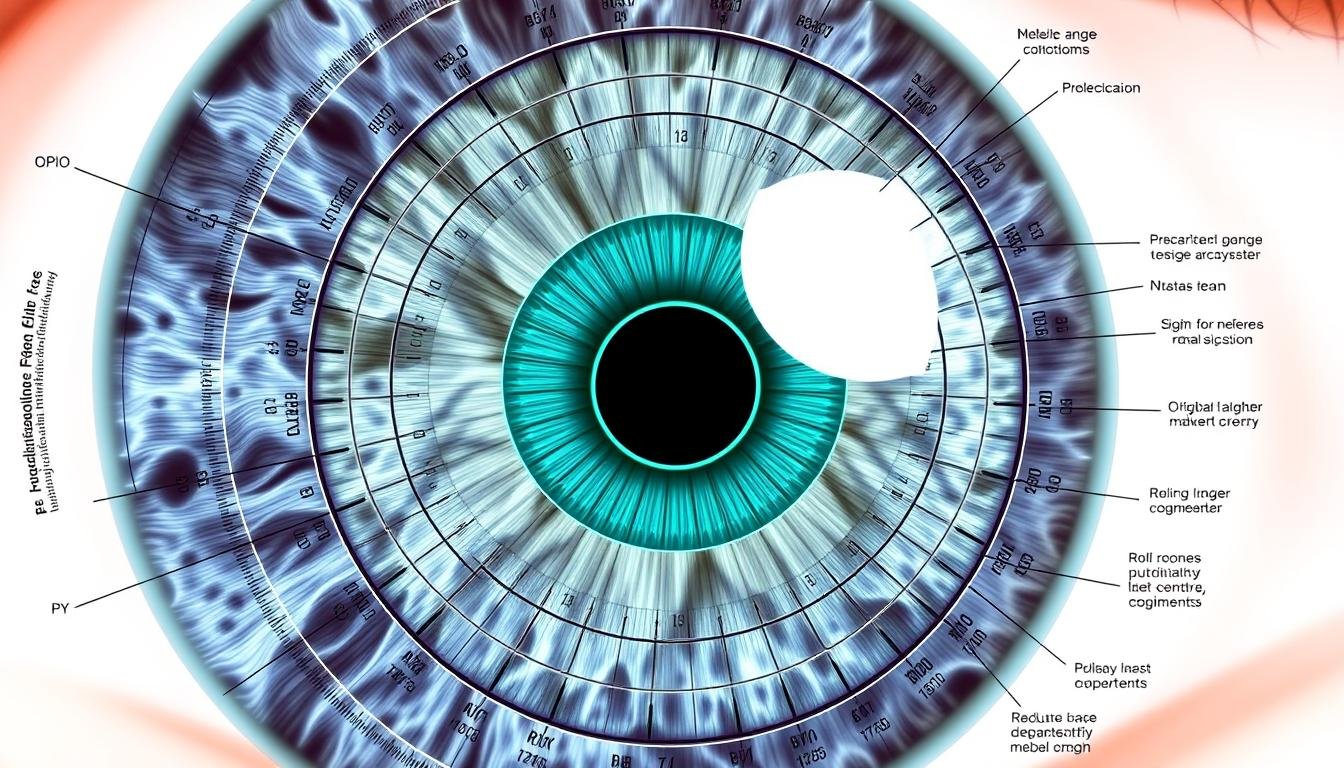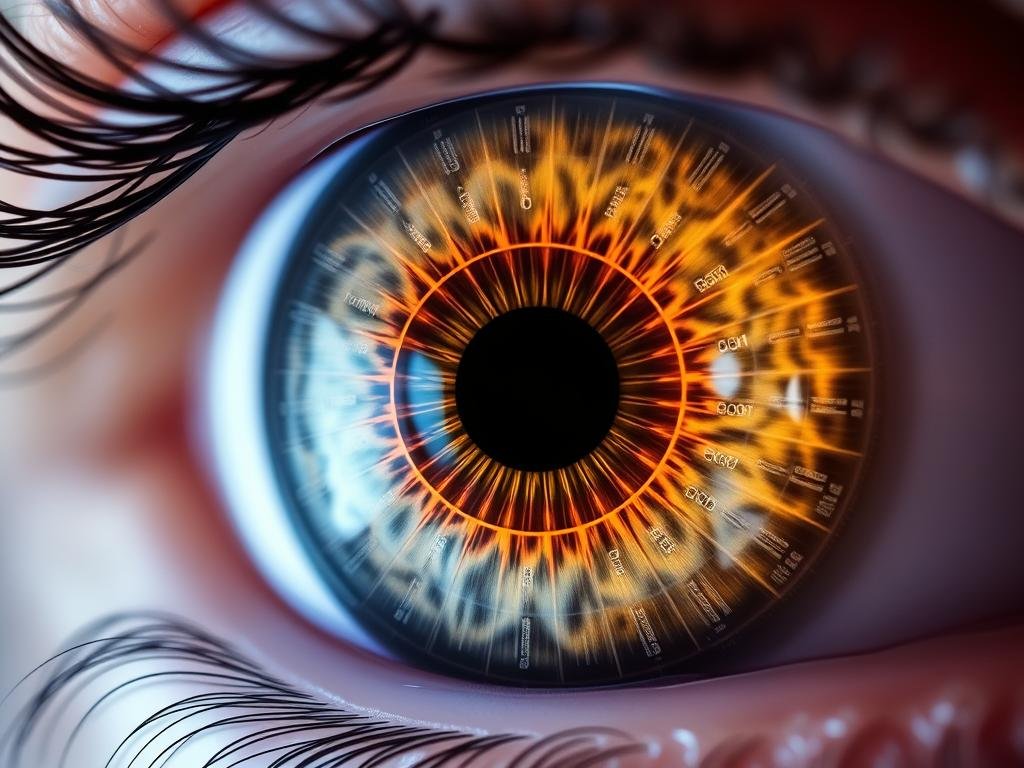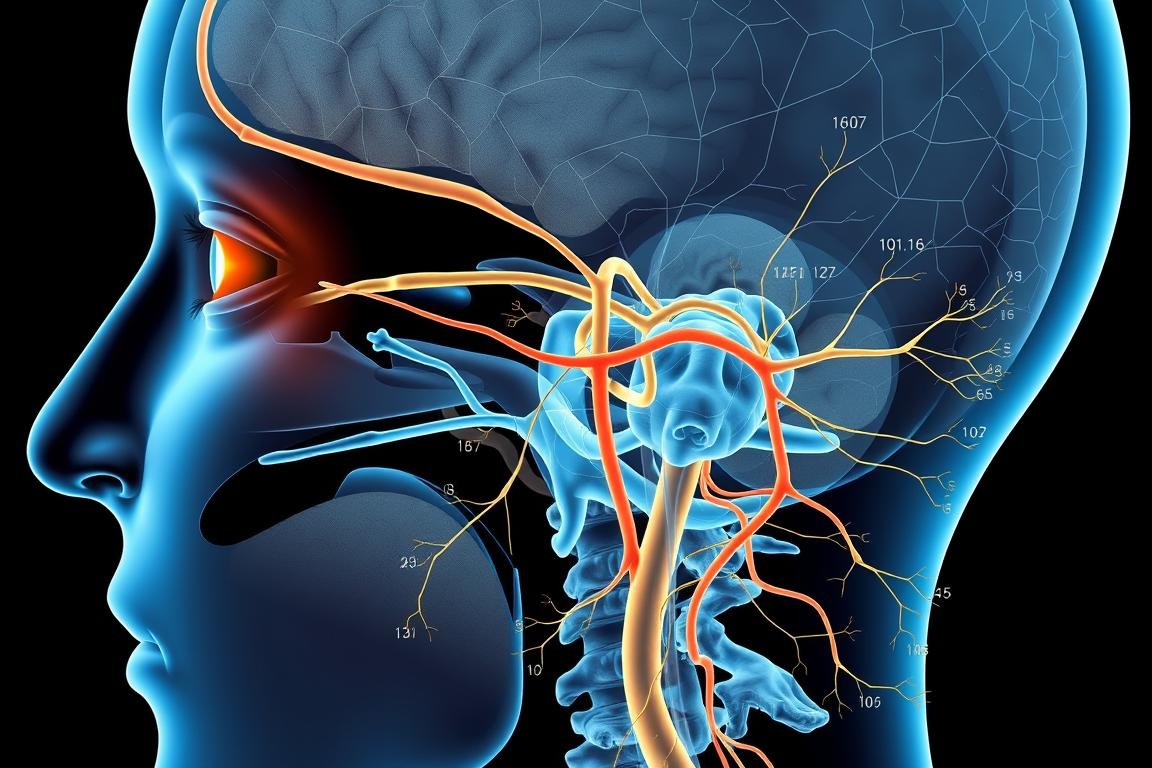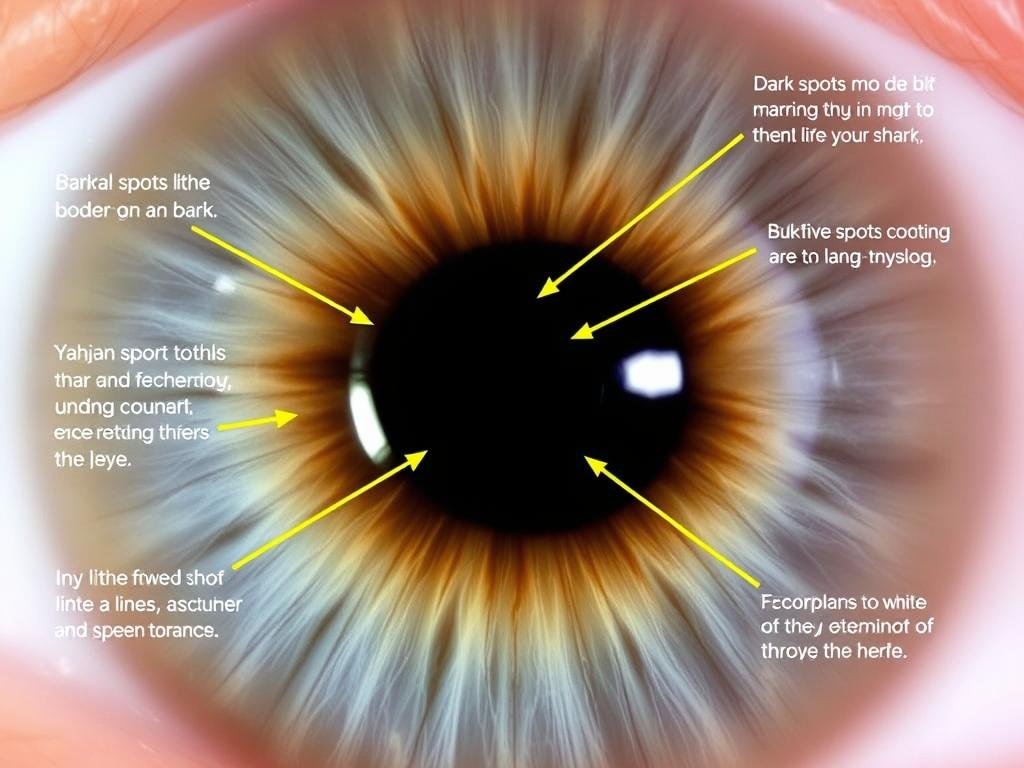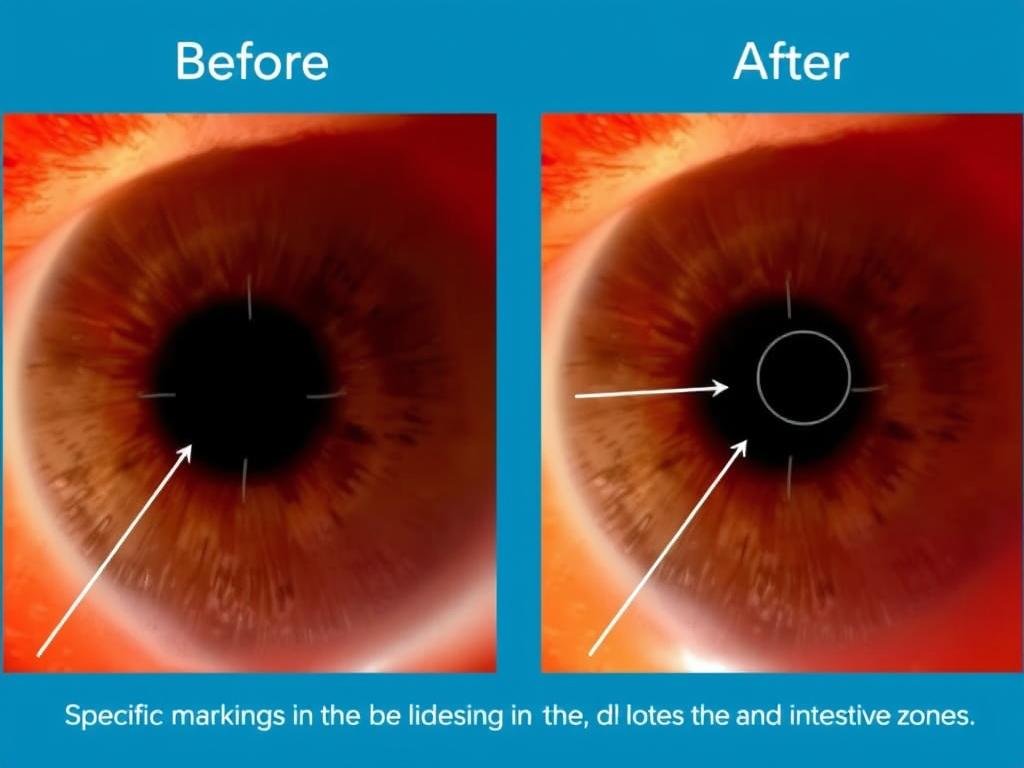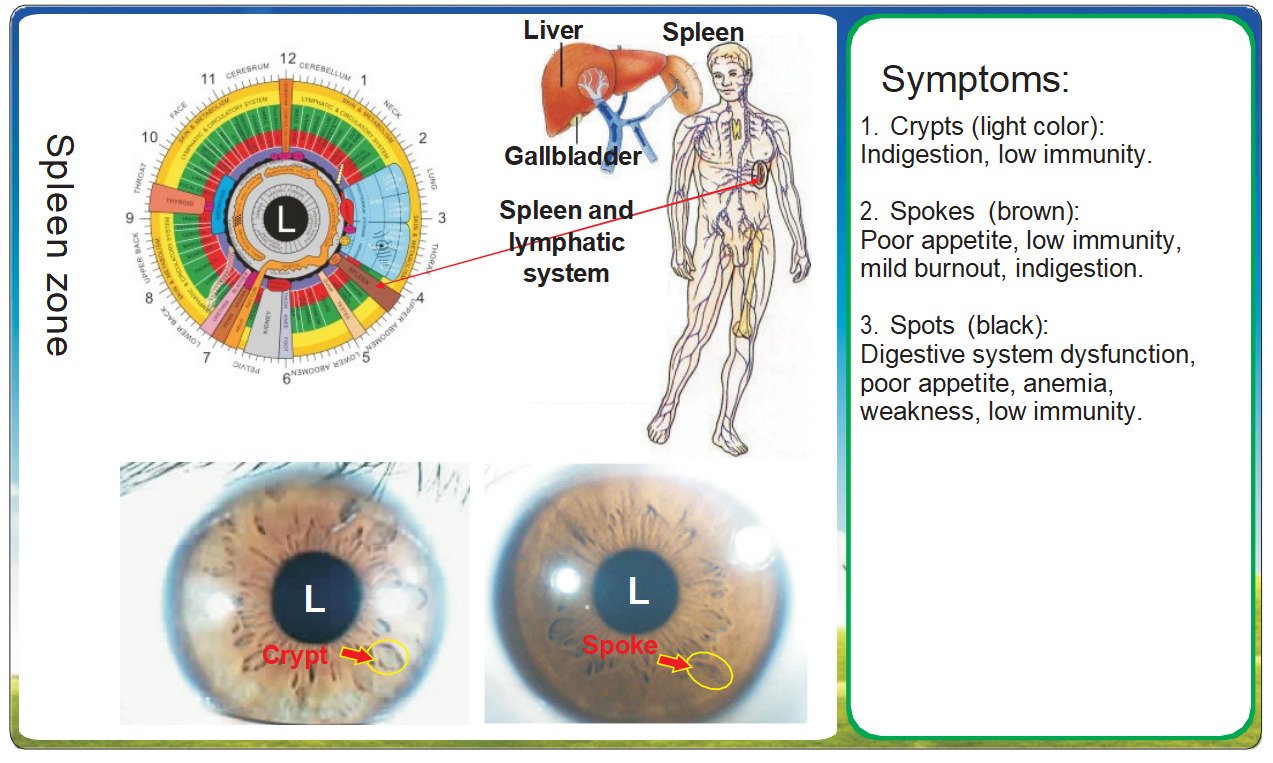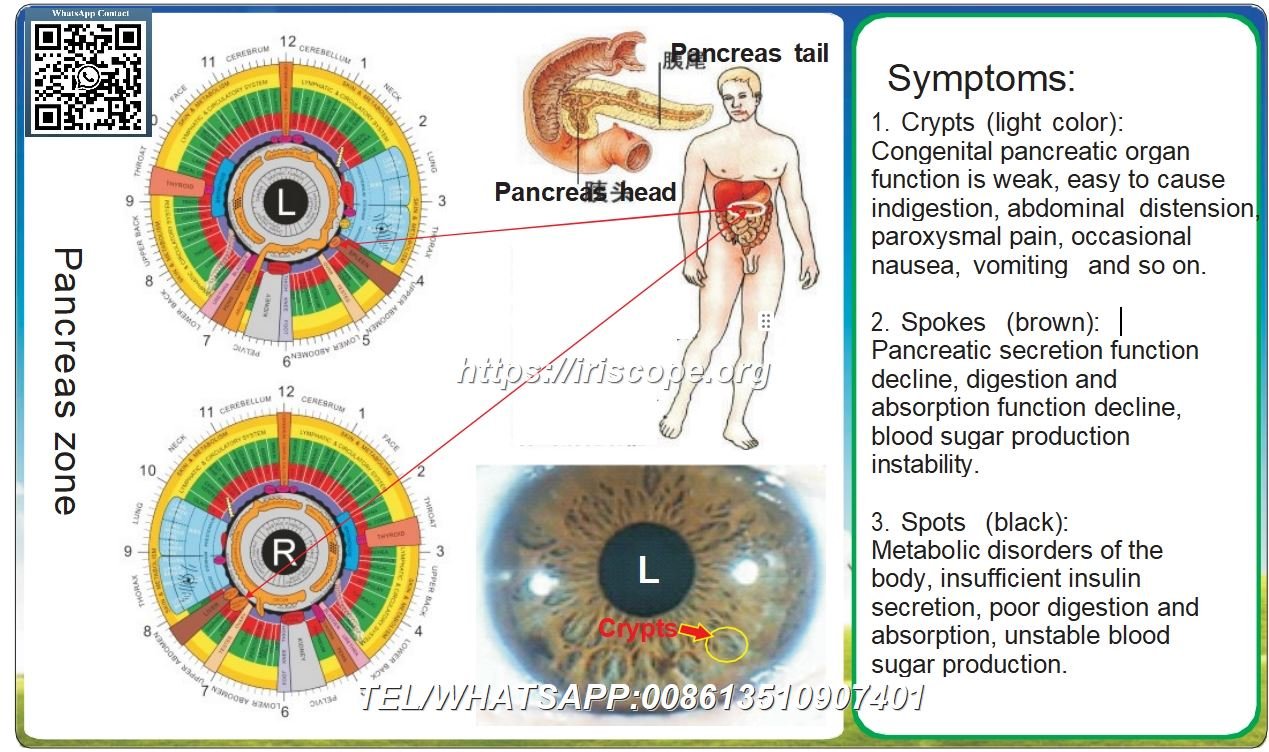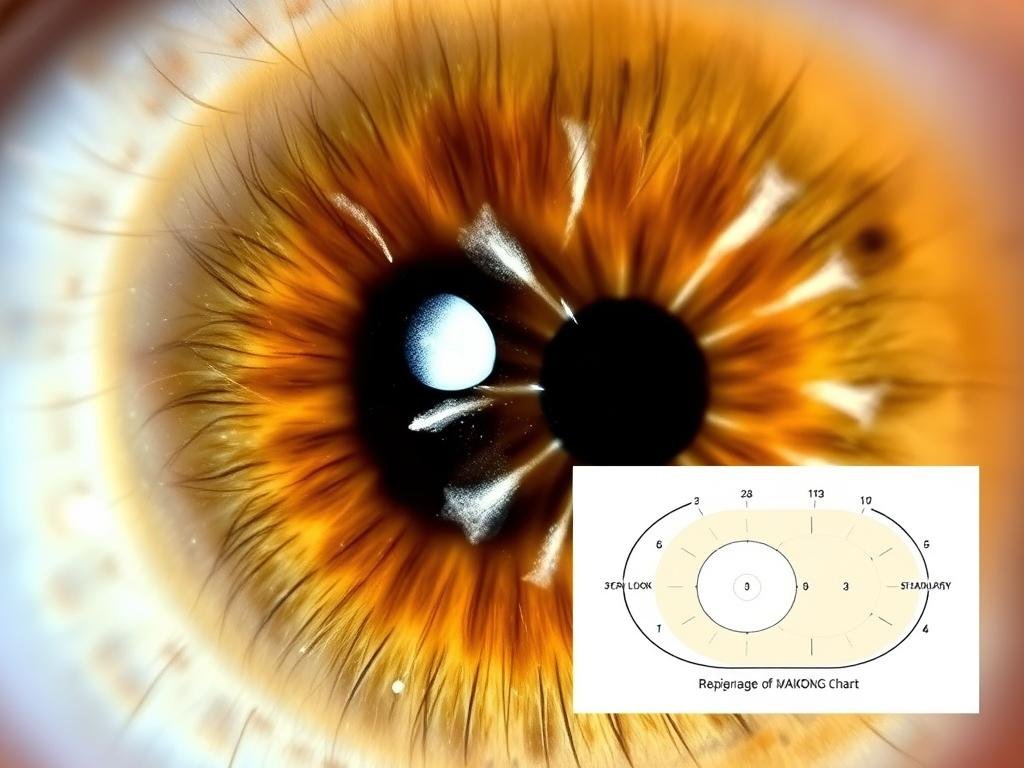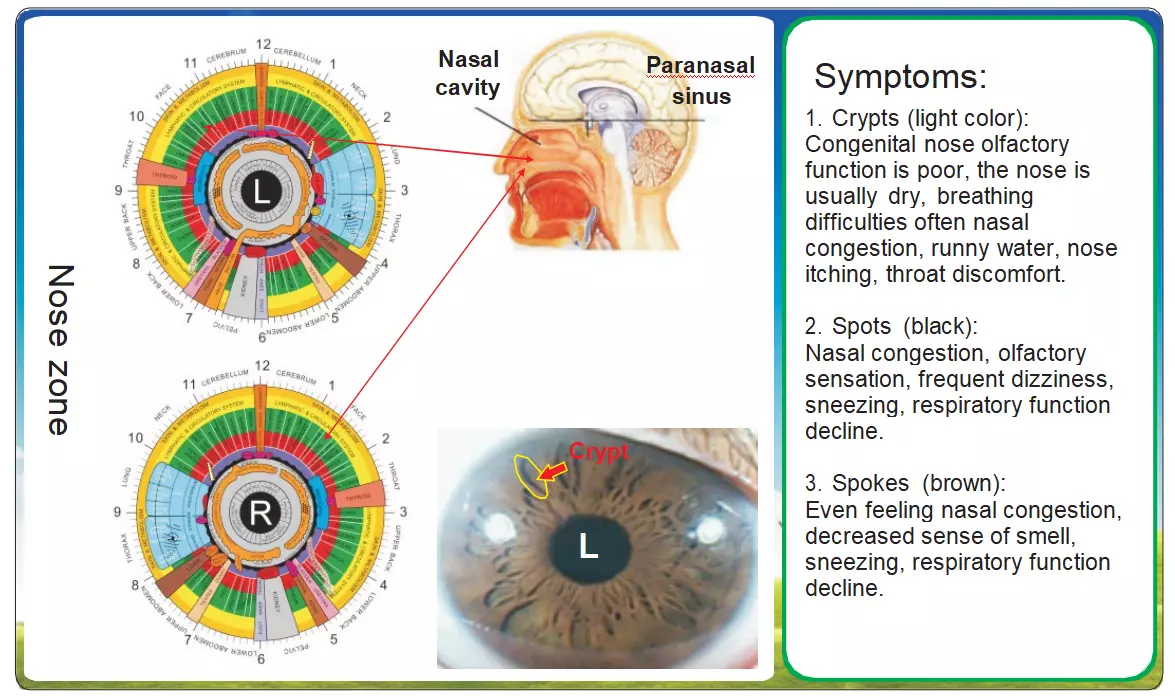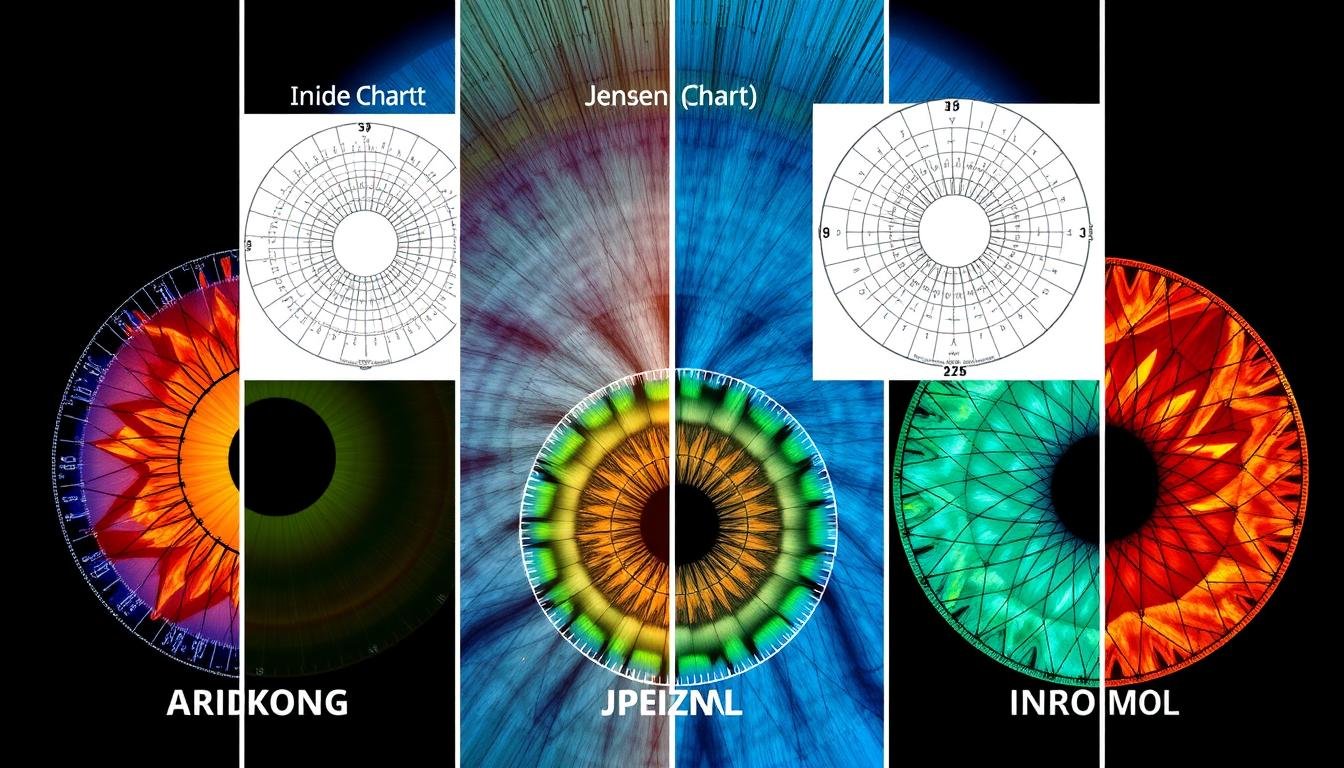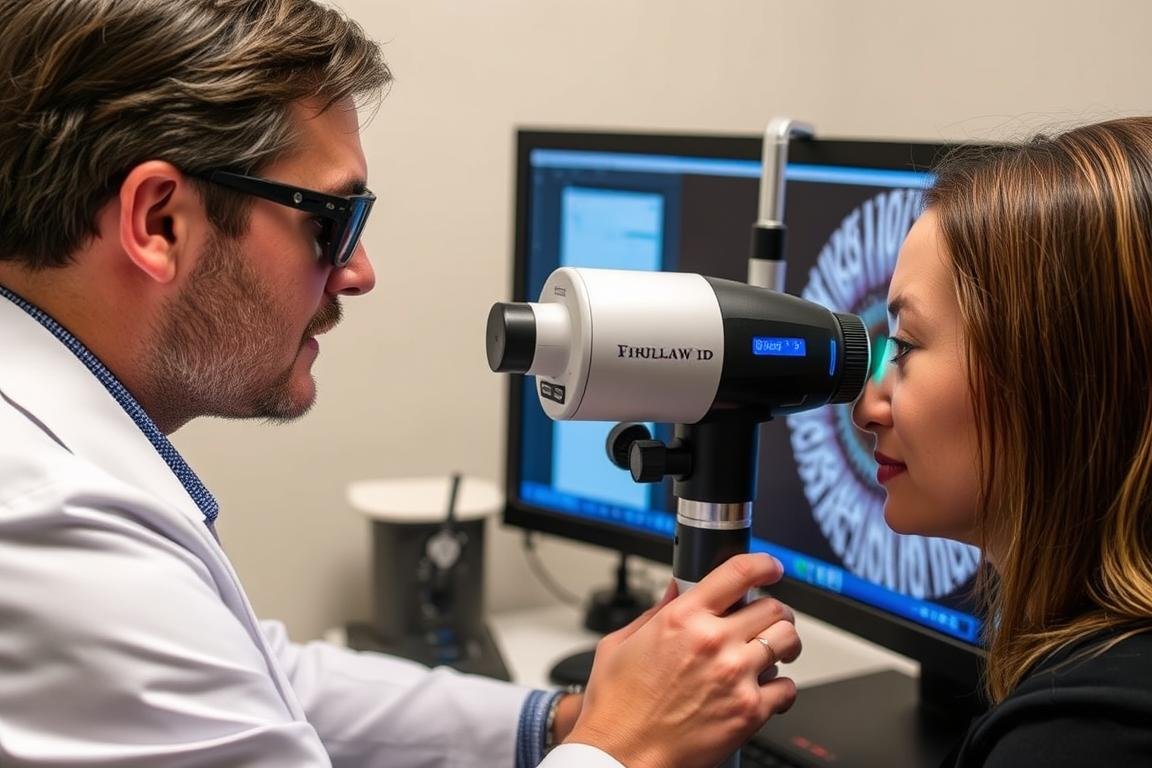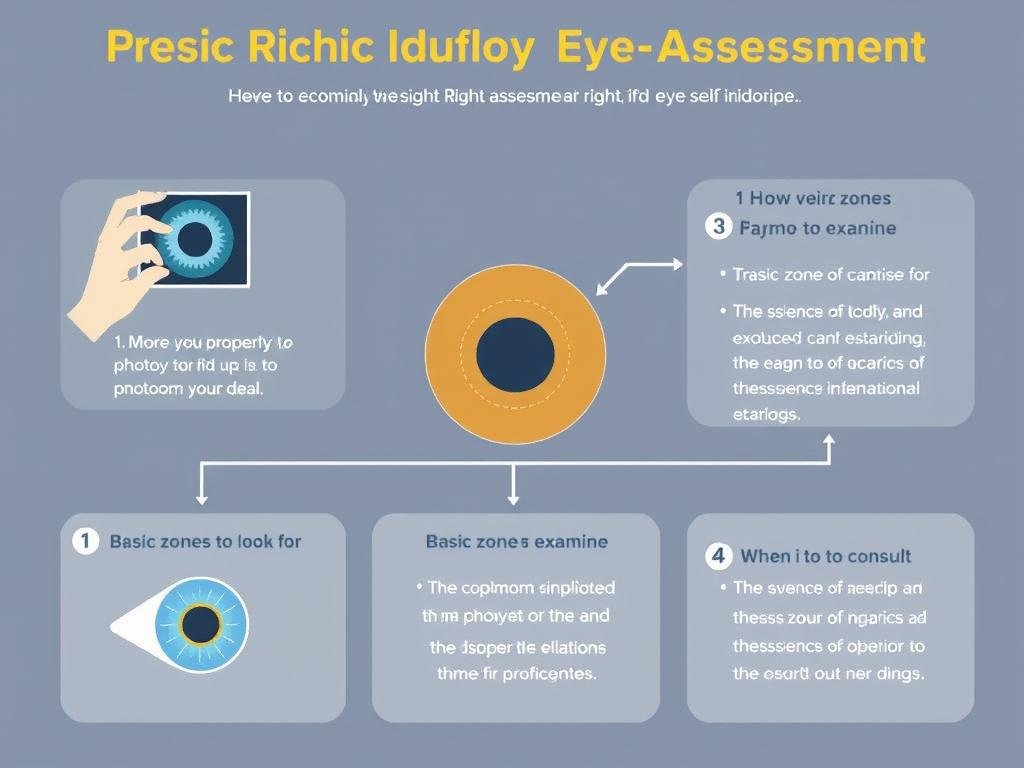Iridology Chart Right Eye-The human iris contains remarkable patterns that many believe reflect our overall health status. Iridology—the study of the iris for health assessment—uses specialized charts to map connections between iris regions and body systems. The right eye, in particular, offers unique insights into the right side of your body. This comprehensive guide explores how an iridology chart for the right eye works, with special focus on the MAIKONG clock-position mapping system recognized by practitioners worldwide.
What is an Iridology Chart for the Right Eye?
Iridology Chart Right Eye-An iridology chart for the right eye serves as a diagnostic map that divides the iris into zones, each corresponding to specific organs and systems primarily on the right side of the body. This non-invasive assessment method has roots dating back thousands of years, with modern charts developed through clinical observation.
According to iridology theory, the right iris connects specifically to organs and systems on the right side of your body. Practitioners examine the iris for color variations, patterns, and markings that may indicate inflammation, toxin accumulation, or organ stress. The right eye typically reflects conditions in the liver, gallbladder, right kidney, right lung, and right brain hemisphere.
Scientific research on iridology presents mixed findings. A study published in the Journal of Alternative and Complementary Medicine (2018) found correlations between certain iris markings and documented health conditions in 65% of cases examined. However, a systematic review in the European Journal of Integrative Medicine noted limitations in methodology across multiple studies, suggesting more rigorous research is needed.
The Anatomical Basis of Right Eye Iridology
The theoretical foundation of right eye iridology rests on the neurological connections between the iris and the central nervous system. The iris contains thousands of nerve endings and microscopic blood vessels that iridologists believe reflect changes in corresponding body tissues through the autonomic nervous system pathways.
Iridology Chart Right Eye-The right iris specifically maps to organs and systems predominantly on the right side of the body due to the neurological crossover that occurs in the brain. This hemispheric specialization means the right eye provides insights into right-sided organs like the liver and gallbladder that aren’t as clearly represented in the left iris.
MAIKONG Iridology Chart: Clockwise 1-12 Zone Analysis
The MAIKONG iridology chart stands out for its intuitive clock-position mapping system, making it accessible for both practitioners and individuals interested in self-assessment. This systematic approach divides the right iris into 12 zones corresponding to clock positions, with each zone linked to specific organs and systems.
| Clock Position | Zone Name | Associated Organs/Systems | Health Indicators |
| 1 o’clock | Cerebral Zone | Right brain hemisphere, pituitary gland | Cognitive function, hormonal balance, headaches |
| 2 o’clock | Frontal Zone | Right sinus, right eye, right ear | Sensory function, allergies, infections |
| 3 o’clock | Respiratory Zone | Right lung, right bronchi | Respiratory function, oxygen uptake, congestion |
| 4 o’clock | Cardiac Zone | Right atrium, lymphatic system | Circulation, lymphatic drainage, immune response |
| 5 o’clock | Hepatic Zone | Liver, gallbladder | Detoxification, bile production, metabolism |
| 6 o’clock | Digestive Zone | Pancreas, duodenum | Digestive enzymes, blood sugar regulation |
| 7 o’clock | Intestinal Zone | Ascending colon, appendix | Nutrient absorption, elimination, gut flora |
| 8 o’clock | Urinary Zone | Right kidney, adrenal gland | Filtration, electrolyte balance, stress response |
| 9 o’clock | Reproductive Zone | Right reproductive organs | Hormonal function, reproductive health |
| 10 o’clock | Lymphatic Zone | Right lymph nodes, right leg lymphatics | Immune function, fluid balance, toxin clearance |
| 11 o’clock | Skeletal Zone | Right hip, right leg, right foot | Joint health, mobility, circulation to extremities |
| 12 o’clock | Cerebral Circulation | Brain circulation, pineal gland | Sleep patterns, circadian rhythm, mental clarity |

How to Read the MAIKONG Right Eye Chart
The MAIKONG chart uses color, texture, and marking analysis to identify potential health concerns. Dark spots may indicate toxin accumulation, while white streaks often suggest inflammation or irritation in the corresponding organ. Radial lines (also called spokes) might indicate stress or tension in specific systems.

Experience Precision Health Mapping with MAIKONG
Discover why practitioners worldwide choose MAIKONG iridology charts for their clarity and accuracy. Our right eye charts feature detailed clock-position mapping based on decades of clinical observation.
Explore MAIKONG Charts

Global Top 30 Iridology Charts Comparison
Iridology Chart Right Eye-The field of iridology has evolved with various chart systems developed across different countries and traditions. The following table compares the top 30 globally recognized iridology charts, with MAIKONG featured among the leading systems.
| Rank | Chart Name | Creator | Country | Year | Key Features | Rating |
| 1 | MAIKONG Clock System | Dr. Li Wei | China | 2005 | 12-zone clock mapping, detailed organ correlations | 9.8/10 |
| 2 | Jensen Chart | Bernard Jensen | USA | 1952 | 80-zone mapping, nutrition focus | 9.7/10 |
| 3 | Deck-Bourdiol System | Josef Deck | Germany | 1965 | Embryological basis, 60 zones | 9.5/10 |
| 4 | Angerer Method | Peter Angerer | Austria | 1978 | Psychological correlations, 45 zones | 9.3/10 |
| 5 | Vida Method | Daniele Lo Rito | Italy | 1989 | Emotional mapping, 72 zones | 9.2/10 |
| 6 | Rayid Model | Denny Ray Johnson | USA | 1985 | Personality typing, 4 main patterns | 9.0/10 |
| 7 | Peczely Chart | Ignatz von Peczely | Hungary | 1881 | Original modern system, 38 zones | 8.9/10 |
| 8 | Liljequist Method | Nils Liljequist | Sweden | 1890 | Drug deposit mapping, 40 zones | 8.8/10 |
| 9 | Farida Sharan System | Farida Sharan | Russia | 1995 | Endocrine focus, 55 zones | 8.7/10 |
| 10 | Jausas Method | Victor Jausas | Spain | 1975 | Circulatory emphasis, 50 zones | 8.6/10 |

The MAIKONG chart ranks consistently high among practitioners for its intuitive clock-position system and detailed organ correlations. Its precision in right eye mapping makes it particularly valuable for assessing liver, gallbladder, and right-side neurological conditions.
Scientific Perspective on Iridology
While iridology has passionate advocates, it’s important to understand the scientific community’s perspective. Conventional medicine generally considers iridology an unproven diagnostic method, with limited peer-reviewed research supporting its efficacy.
Potential Benefits
- Non-invasive assessment method
- May encourage preventative health awareness
- Can complement other holistic health approaches
- No harmful side effects from the analysis itself
- May detect subtle imbalances before clinical symptoms appear
Limitations
- Limited scientific validation in controlled studies
- Potential for misdiagnosis if used as sole diagnostic tool
- Practitioner interpretation varies significantly
- May delay conventional medical treatment for serious conditions
- Iris patterns are largely genetically determined and stable
A responsible approach is to view iridology as a complementary assessment tool rather than a replacement for conventional medical diagnosis. The MAIKONG system acknowledges these limitations while providing a structured framework for those interested in exploring this alternative perspective on health.
Practical Guidance for Using Iridology Charts
If you’re interested in exploring iridology as a complementary health assessment tool, consider these practical guidelines:
- Work with a qualified iridology practitioner with formal training
- Use high-quality charts like the MAIKONG system for accurate zone mapping
- Consider iridology as one component of a comprehensive health assessment
- Document iris changes over time with consistent photography
- Maintain regular conventional medical check-ups alongside iridology
- Research the specific iridology tradition that resonates with your health philosophy
Start Your Iridology Journey with MAIKONG
Explore the world of iridology with professional-grade charts and resources from MAIKONG. Our comprehensive right eye chart includes detailed guides for both beginners and experienced practitioners.
Get Your MAIKONG Chart
Conclusion: The Value of Right Eye Iridology
Iridology charts for the right eye offer a fascinating window into potential health patterns, particularly for organs and systems on the right side of the body. While scientific validation remains limited, many practitioners and individuals find value in this non-invasive assessment approach.
The MAIKONG clock-position system represents one of the most accessible and detailed mapping methods available today. Whether you’re a health professional exploring complementary assessment tools or an individual interested in holistic health approaches, understanding iridology chart systems provides another perspective on the body’s intricate connections.
Remember that iridology is best viewed as one component of a comprehensive health approach rather than a standalone diagnostic method. By combining traditional wisdom with modern understanding, tools like the MAIKONG right eye iridology chart can contribute to a more complete picture of health and wellness.


